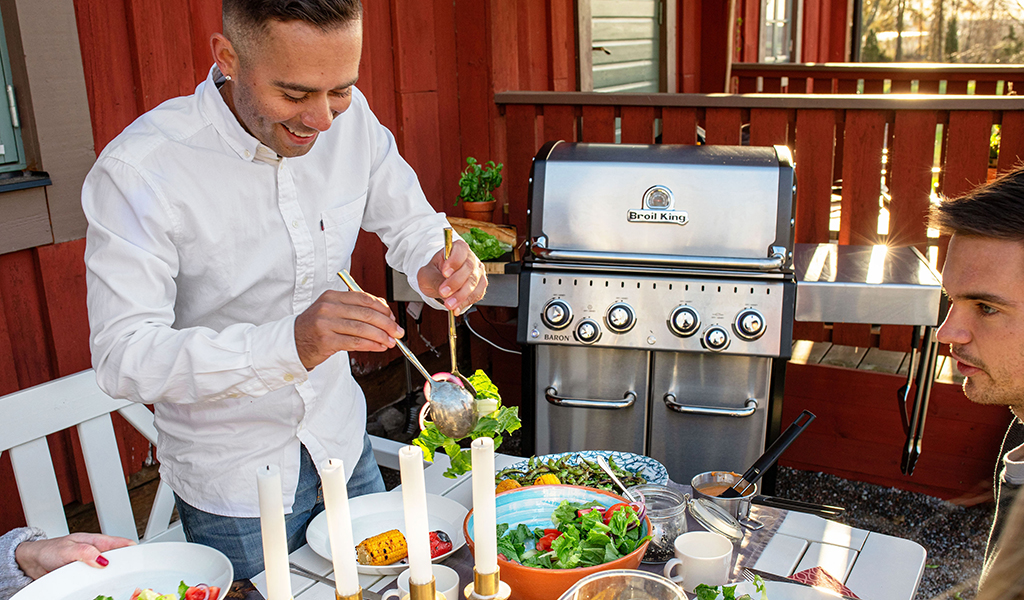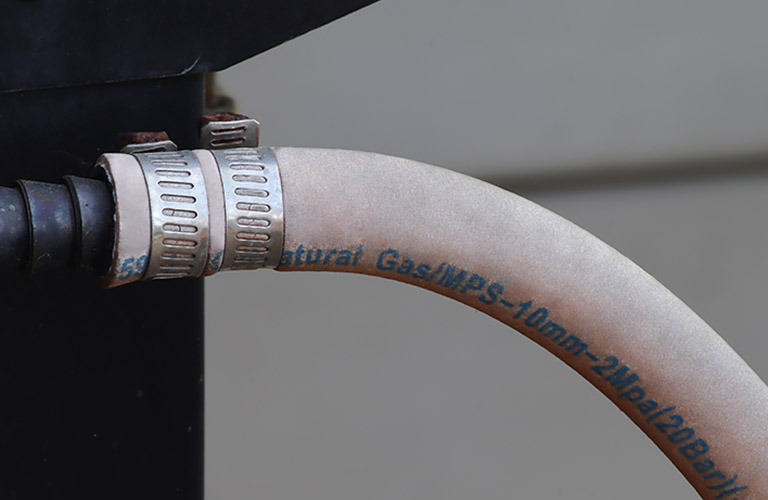
But it’s not the difference that you think…
It’s called convenience! If you have natural gas coming from city pipes into your home, you can absolutely tap into this convenient resource to fuel your backyard gas grill.
Is it any different than grilling with traditional propane tanks? Nope, not when you purchase and install a gas grill configured for natural gas.
Here’s what you need to know.
Performance
Despite what you may have heard from your neighbour, there is no performance difference between a propane grill and natural gas grill unless it’s the depth of the winter. When the temperature plunges – and we’re talking -45˚F cold, are you really outside, grilling? Propane performance is hindered because the liquid cannot vaporize. Otherwise, all grills are calibrated to work the same using propane or natural gas.
How? While propane has more power, more than twice the BTU power of natural gas, grills are designed to release less propane into the burner than natural gas. All gas is jetted from small orifices at the entrance of the burner to mix with air to get the perfect flame. The orifice holes for propane are much smaller than those for natural gas. This is why it’s important to know what fuel source you plan to use when shopping for a grill.
Suppose you change your mind and want to hook up to natural gas after purchasing a propane grill. In that case, you will need to buy different burner tubes, change every small orifice fitting by replacing the entire valve manifold and purchase a longer hose to convert the grill. We don’t recommend it, but the change is possible, albeit one of the more complicated grill modifications. When shopping for grills, you will see pricing for LP (liquid propane) and NG (natural gas). Grills configured for natural gas will be slightly higher in price due to the longer 10-foot hose.


Convenience
We always recommend keeping two propane tanks on hand for grilling since you never know when you’ll run out. And if you’ve ever run out mid-cookout – especially during a long, low and slow cook time – you know how frustrating this can be.
With natural gas, you never run out of fuel. Period.
Cost

The cost of propane and natural gas fluctuates monthly according to the fuel market. And where you live can affect the price; in some areas, natural gas is more expensive and vice versa. If your home’s systems – like heat, water heater, stove, or dryer – are already on natural gas, it makes sense to consider connecting your grill.
In general, expect to pay around $40-$50 for a 20lb propane tank. Then, you can either refill it at specific locations; or exchange the tank for a full one at most major grocery, hardware, big box stores, and some gas stations. Expect to pay around $3.00-$4.00 per gallon to refill or $4.00-$5.00 per gallon to exchange it. Natural gas is billed per therm and generally runs between $.50-$2 per therm, plus any additional monthly maintenance/administrative fees.
Of course, prices can vary significantly between geographical locations and even seasons. If you have the option for either, do your research and pick the most economical and convenient fuel source for you.
One other consideration on cost: A propane gas grill requires no installation costs, but if you’re tapping into your natural gas pipes, you will have a cost related to installing a gas line in your backyard. You cannot do this yourself and must hire a gas fitter.
Finally, a natural gas grill requires a longer gas hose – 10′ vs. 1′ on a propane grill – so this will slightly increase your grill’s cost at the time of purchase.
Bottom Line
There is NO performance difference between propane and natural gas unless you’re grilling in the arctic. The only significant difference is the convenience of natural gas and never running out of fuel. Your choice ultimately boils down to which fuel sources you have access to and the costs in your area.


